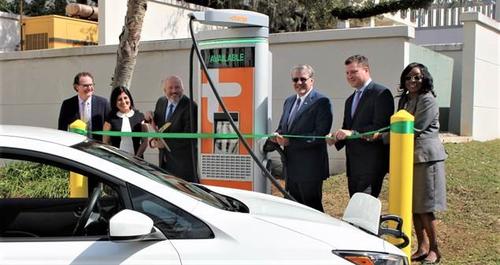A roundup of headlines curated for state transportation environmental professionals
FEDERAL ACTION
Wicker, Bennet Introduce American Infrastructure Bonds Act – Y’all Politics
EPA wants to help cities keep their transit systems clean – WFED Radio’s Federal Drive
COVID-19
AASHTO Council Meeting Highlights COVID-19 Impact on Transportation – AASHTO Journal
Millions of Americans Have Moved Due to Coronavirus – CItyLab
Understanding Resilience: The Impact of COVID-19 – Lehigh University
Mayor Durkan Announces Six-Year Seattle Transportation Benefit District Proposal to Aid in Equitable COVID-19 Recovery – Seattle DOT
‘Time Is Always Money’: Pandemic Lockdowns Hasten Infrastructure Work – New York Times
Bikeshare Ridership Down 44% During COVID-19 – USDOT, Bureau of Transportation Statistics (Press release)
MTA and Transit Innovation Partnership Launch COVID-19 Response Challenge to Strengthen Public Transit – Metropolitan Transportation Authority (Press release)
How Urban Transport is Changing in the Age of COVID-19 – Earth Institute/Columbia University
NEPA
Make America Build Again: Reform NEPA Now – Forbes (Commentary)
President Trump, Secretary Chao to announce major policy change in Atlanta – WAGA-TV
INFRASTRUCTURE RESILIENCE AND SUSTAINABILITY
EPA battles Rover Pipeline in Ohio Supreme Court – Columbus Dispatch
Have a brilliant idea? Our research section wants to hear about it. – Iowa DOT
Meet Trevor Pawl, Michigan’s chief mobility officer – Talking Michigan Transportation (Podcast)
Paving a stable pathway to future-proof transport systems – GreenBiz
It’s Time to Try Congestion Pricing in L.A. – CityLab (Opinion)
Stop Falling For The Congestion Con – Honolulu Civil Beat (Opinion)
Draft EIS unveiled for Port of Long Beach on-dock rail facility – Progressive Railroading
AIR QUALITY
SoCal Experienced Worst Air Quality In A Decade Over July 4th Weekend – CBSN Los Angeles
Carbon emissions in electricity fell in 2019, even as economy grew – Washington Examiner
ENVIRONMENTAL JUSTICE
Meet the Nuns Who Created Their Own Climate Solutions Fund – Mother Jones
Roundtable: The Urgency of Delivering Environmental Justice – and Clean Energy – in New Jersey – NJ Spotlight
Why the Larger Climate Movement Is Finally Embracing the Fight Against Environmental Racism – Time
NATURAL RESOURCES
Noise is air pollution – The Daily Item (Opinion)
Feds scrap plans to reintroduce grizzlies to North Cascades – Associated Press
Handheld platform technology uses single sample to deliver fast, easy results on water quality – Northwestern University
What’s the water quality in Alaska harbors like without cruise ship traffic? State scientists will find out this summer. – KHNS
CULTURAL RESOURCES
Nashville’s Downtown Tests the City-Within-a-City Concept – CityLab
HEALTH AND HUMAN ENVIRONMENT/ACTIVE TRANSPORTATION
Fort Worth Bike Share hacked, users’ credit card info and names possibly compromised – Star-Telegram
New initiative opens some low-speed state roadways to healthy uses – Washington State DOT (Press release)
Caltrans Adopts Action Plan to Increase Walking, Bicycling Statewide – Caltrans (Press release)
New York as a Biking City? It Could Happen. And It Should. – New York Times (Commentary)
TRB RESOURCES/ANNOUNCEMENTS
RFP: Measuring the Effectiveness of Public Involvement at Five State Departments of Transportation: Implementation of the NCHRP Research Report 905 Toolkit – TRB (RFP announcement)
TRB Committee on Environmental Analysis and Ecology Virtual Seminar – TRB
Mobility on Demand (MOD) Sandbox Demonstration: Fair Value Commuting, Final Report – FTA
FHWA HEP research quarterly newsletter: Spring 2020 – FHWA
U.S. Department of Transportation Launches Summit on Pedestrian Safety – Virtual Series – FHWA
EDC News: Reduce Costs and Expedite Project Delivery with Project Bundling – FHWA
FEDERAL REGISTER NOTICES
Forest Service Handbook: Operation and Maintenance of Developed Recreation Sites – US Forest Service (Notice of availability for public comment)
Clean Water Act Section 401 Certification Rule – EPA (Final rule)



